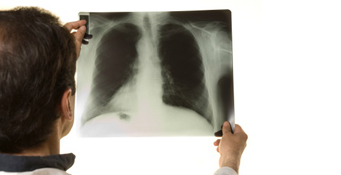The first large study to report that HIV-infected people have a significantly higher risk of both reduced and preserved ejection fraction heart failure (HF) in the antiretroviral therapy (ART) era has been published in JAMA Cardiology.
Matthew Freiberg, M.D., associate professor of Cardiovascular Medicine at Vanderbilt and lead author of the study, said the findings have important implications for HIV-infected individuals and their health care professionals.
ART has improved the life expectancy of those infected with HIV, and with improved survival, cardiovascular disease has become a major health complication.
“Now that HIV infection has transitioned from being a death sentence to a chronic disease, we are seeing more individuals approach the same life expectancy as someone who is not infected,” said Freiberg. “One of the areas of concern is heart failure. Not only are we seeing a higher rate of heart failure among this group, we are seeing it present decades earlier than expected.
“We want providers to think about heart failure in this population. It’s imperative that they understand that the risk is there and that we begin to develop guidelines for prevention and management for this high-risk population.”
“Association Between HIV Infection and the Risk of Heart Failure With Reduced Ejection Fraction and Preserved Ejection Fraction in the Antiretroviral Therapy Era” analyzed data from the Veterans Aging Cohort Study, a national cohort of HIV-infected and uninfected veterans. There were more than 98,000 participants. All participants were free of cardiovascular disease at baseline.
In this cohort, individuals with HIV infection had a 61 percent increased risk of heart failure with reduced ejection fraction, a 21 percent increased risk of heart failure with preserved ejection fraction, and a 37 percent increased risk of borderline heart failure with preserved ejection fraction compared with uninfected veterans.
“We hope that by understanding the risk in an HIV-infected person, we will be able to better understand the risks in other populations as well,” said Freiberg. “We also want this study to serve as a platform for awareness for providers as well as for those living with HIV.
“Future research should focus on prevention, risk stratification and identification of the mechanisms of heart failure with reduced injection and preserved injection fraction in the HIV-infected population.”















